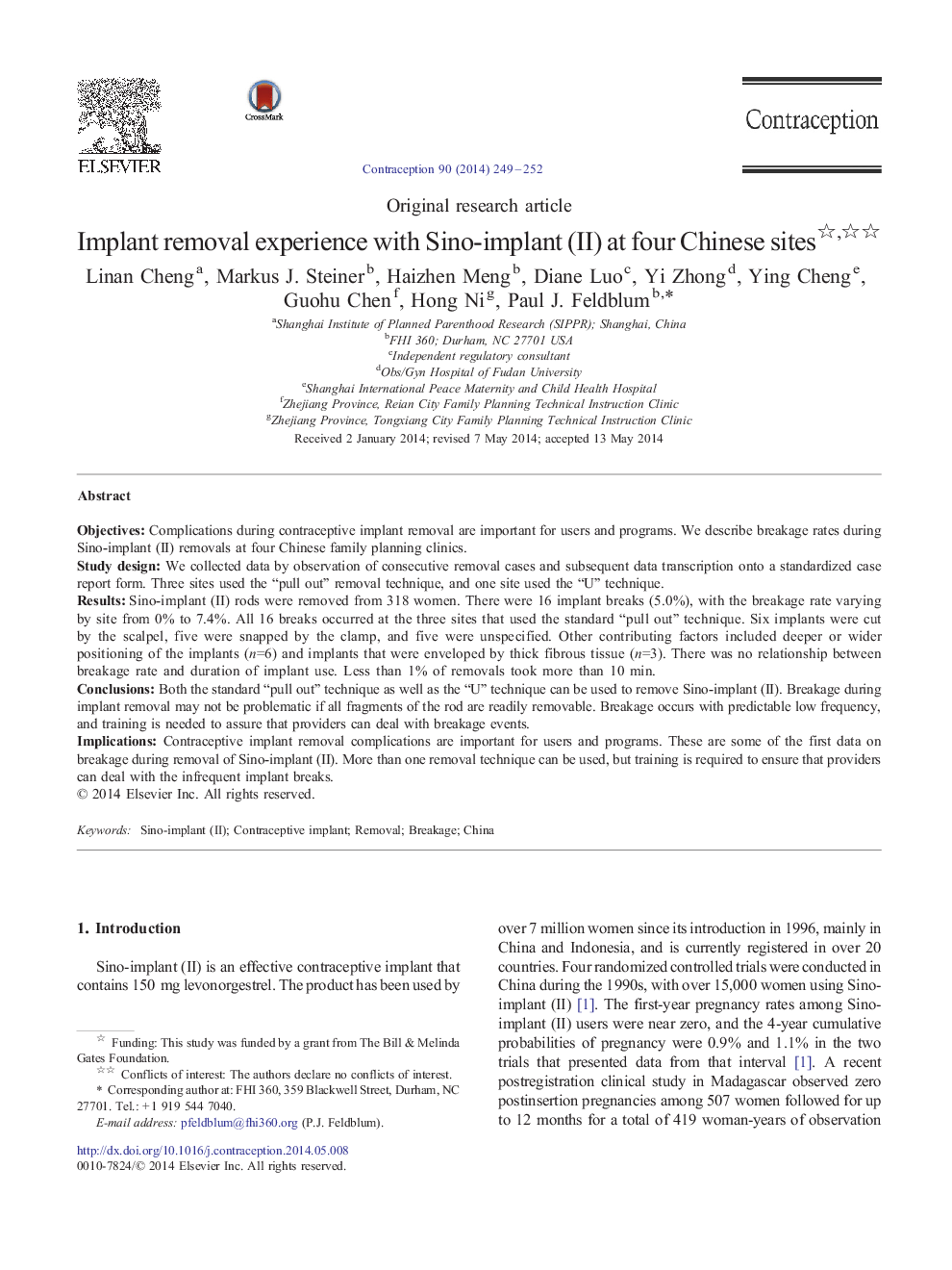| Article ID | Journal | Published Year | Pages | File Type |
|---|---|---|---|---|
| 6171253 | Contraception | 2014 | 4 Pages |
ObjectivesComplications during contraceptive implant removal are important for users and programs. We describe breakage rates during Sino-implant (II) removals at four Chinese family planning clinics.Study designWe collected data by observation of consecutive removal cases and subsequent data transcription onto a standardized case report form. Three sites used the “pull out” removal technique, and one site used the “U” technique.ResultsSino-implant (II) rods were removed from 318 women. There were 16 implant breaks (5.0%), with the breakage rate varying by site from 0% to 7.4%. All 16 breaks occurred at the three sites that used the standard “pull out” technique. Six implants were cut by the scalpel, five were snapped by the clamp, and five were unspecified. Other contributing factors included deeper or wider positioning of the implants (n=6) and implants that were enveloped by thick fibrous tissue (n=3). There was no relationship between breakage rate and duration of implant use. Less than 1% of removals took more than 10Â min.ConclusionsBoth the standard “pull out” technique as well as the “U” technique can be used to remove Sino-implant (II). Breakage during implant removal may not be problematic if all fragments of the rod are readily removable. Breakage occurs with predictable low frequency, and training is needed to assure that providers can deal with breakage events.ImplicationsContraceptive implant removal complications are important for users and programs. These are some of the first data on breakage during removal of Sino-implant (II). More than one removal technique can be used, but training is required to ensure that providers can deal with the infrequent implant breaks.
